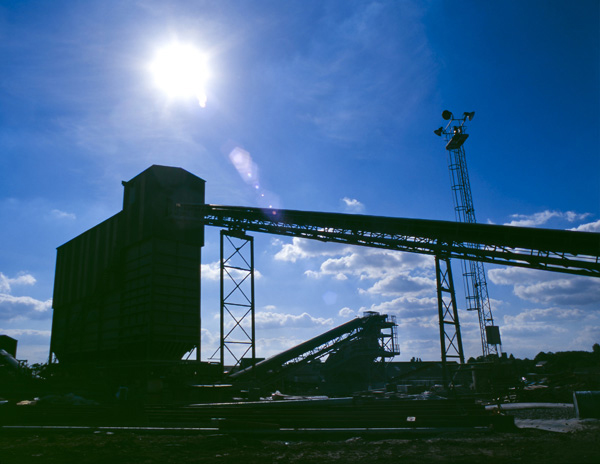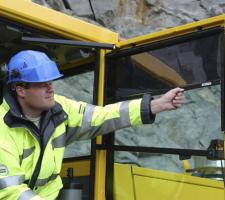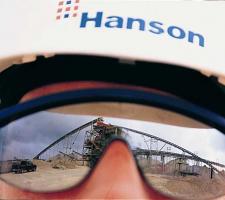
Incidence of skin cancer is on the rise in Europe and with quarry workers at the highest risk of workplace exposure to UV radiation, ABE LOOKS at the options for protection
This year over 130,000 people in Europe will be diagnosed with melanoma skin cancer, and 9000 of those will die as a result, following extended exposure to UV radiation from the sun. Many more will suffer from other solar exposure related eye and skin conditions and with an increasing incidence rate over the last few years, the numbers affected are likely to continue growing.
According to the European Agency for Health & Safety at Work (OSHA), the risk of workplace exposure to solar radiation needs to be carefully assessed, evaluated and addressed. While statistics for skin cancer attributable to exposure during working hours cannot be defined, the OSHA has said that incidence is highest among outdoor industries, such as agriculture and quarrying.
"The OSHA is currently working on a report looking at the risks of workplace exposure, which will be published later this year," said OSHA assistant project manager Emmanuelle Brun. "Data from the 1990s suggested that there were more than 9million people in Europe exposed to solar radiation through their work but these figures have not been updated. Also the prevalence of diseases related to workplace exposure is unknown.
"While it is clear that workers in the quarrying sector are among the most at risk from work-related solar radiation exposure, it has also been difficult to find or establish data on exposure levels in the industry." While framework legislation requiring employers to protect their workforce from safety risks exists across Europe, solar radiation is not specifically mentioned. The topic is a contentious issue in Europe - lengthy discussions about the inclusion of solar radiation in the optical radiation section of the Physical Agents Directive delayed adoption for some time. Eventually exposure to solar radiation was dropped but each Member State was recommended to review whether national legislation should be adopted.
Although the Physical Agent Directive does not provide legislation on maximum exposure levels or protection from solar radiation, it does set out assessment criteria. Details of the European standards for measurement and assessment of solar radiation are set out in EN142251-2005.
According to Brun, quarry operators in Europe should assess the risk from solar radiation to its workforce. "If it is not possible to avoid exposure, then the risk needs to be carefully evaluated and appropriate protection measures taken," she said. "Protection options could include providing shading structures, or reorganising the working day to avoid exposing workers to the strongest UV radiation at midday. Other personal protection equipment could include provision of clothing to cover the skin, gloves, sunglasses and sunscreen." Even while working inside an air conditioned cab of a machine within the quarry, the operator can be exposed to UV radiation from the sun. Many new machines are fitted with tinted glass to provide a filter effect but it is impossible to provide complete protection. Older machines that do not have tinted glass can be retro-fitted with a filtering glaze to offer better protection.
"Quarry operators need to take this problem seriously - scientific data clearly shows that the UV index is increasing globally, so the risk from solar radiation exposure is growing," said Brun. "While the exposure of operatives during their leisure time cannot be controlled, employers must ensure that workers are protected during employment hours."
Solar radiation: protection
•Don't wait until the skin feels uncomfortable before taking preventative action. The best form of protection is defence. Once skin is burned, the damage has already been done so cover-up up with loose-fitting clothes.
•Make sure that legs and arms are covered. Tightly woven fabrics will provide the best protection from the sun.
•Avoid direct exposure to sunlight between the hours of 11am and 3pm when the sun is at its strongest. If you do go outside between these times cover-up with clothes, hat and sunglasses and apply plenty of sun protection lotion.
•Always use a sun protection lotion with an SPF (sun protection factor) of at least 15. Very fair-skinned people and children need to use lotions with an SPF of up to 40.
•Make sure that your entire body is covered by sun protection lotion. This includes your face, hands, feet and neck. The most vulnerable parts of your body are the places that are not usually exposed to sunlight.
•Apply sun lotion at least 30 minutes before going out in the sun. Reapply it every couple of hours, as sweat and friction against towels for example will cause it to wear off. Reapply immediately after swimming, even if your lotion is a waterproof variety.
•Cloud and fog do not protect skin from ultraviolet rays. Cover up with clothing and use SPF 15 sun lotion even on cloudy days.
•Always wear a hat and sunglasses that have UVA and UVB filters when in the sun. Ultraviolet rays can damage the retinas in your eyes causing cataracts and other eye damage.
Regular checks
Employees who regularly work outside should check their skin periodically to monitor any changes in texture and appearance of existing moles, particularly if the mole is itchy or bleeds. According to OSHA, people with pale or freckly skin, especially those with blonde or red hair, are at the highest risk of skin damage from solar radiation. Although people with darker skins tend to be at lower risk, they should still check for any symptoms and take precautionary measures.
The damage
The impact of continued long term exposure to UV radiation on the human body can affect both the skin and eyes. The most well publicised impact is melanoma skin cancer but there are a whole range of other debilitating disorders that are directly attributable to solar radiation.
While melanomas are the most serious impact, extended exposure can lead to burning, and tanning is actually the result of sun damage. Human skin can also undergo premature photo-aging or become affected by non-melanoma skin cancer.
The eyes are also sensitive to UV radiation and can become permanently damaged leading to blindness or impaired vision. "Damage to the eyes can include cataracts, solar retinal rethinopathy and macular degeneration," said Brun. "The corneas can also be affected with conjunctivitis, corneal bronzing and carcinoma of the cornea.
"It is very difficult to calculate just to what extent UV from solar radiation attributes to the prevalence of these disorders. However, we know that exposure heightens the risk, so protection is important during both work and leisure time."











